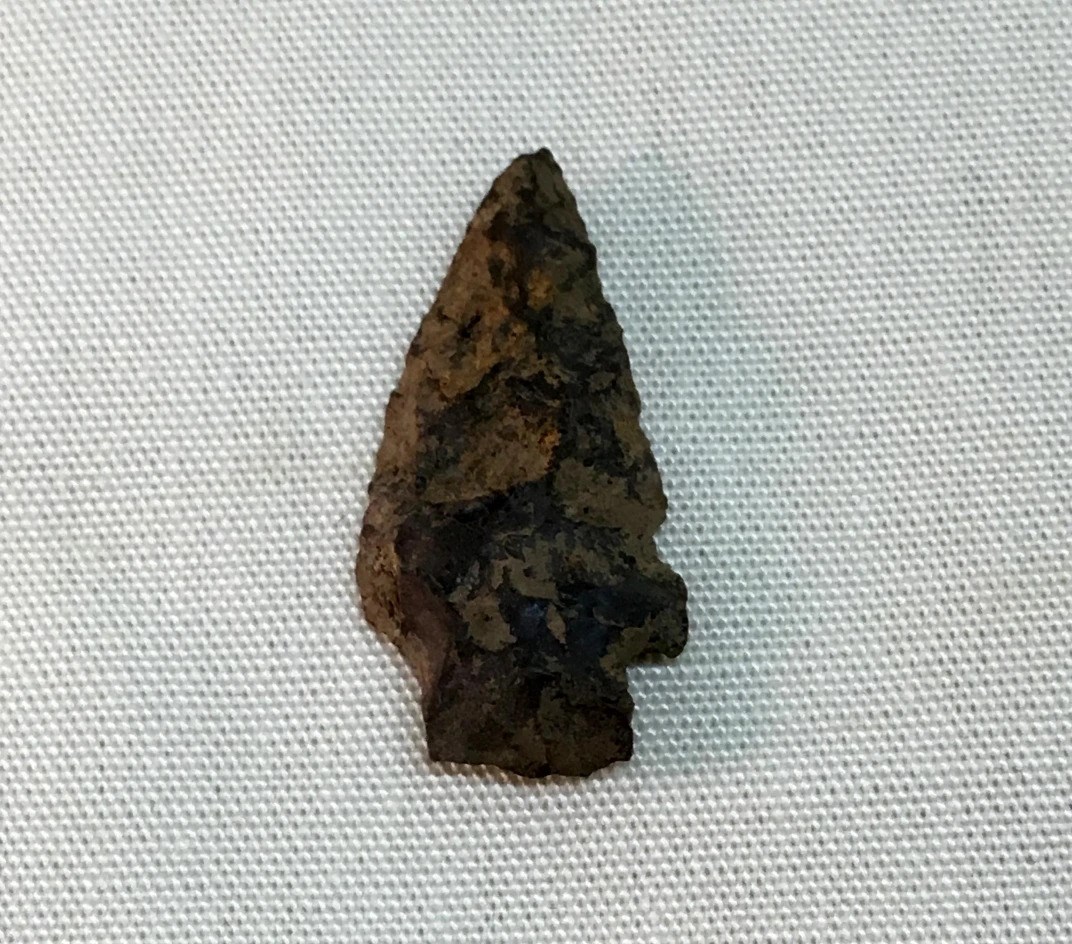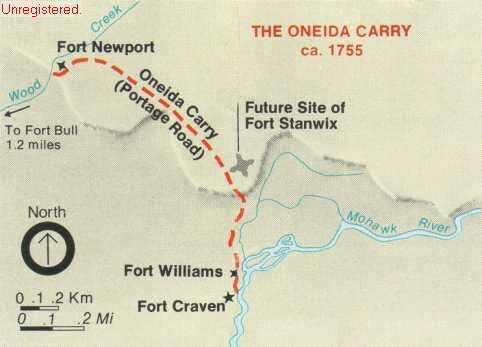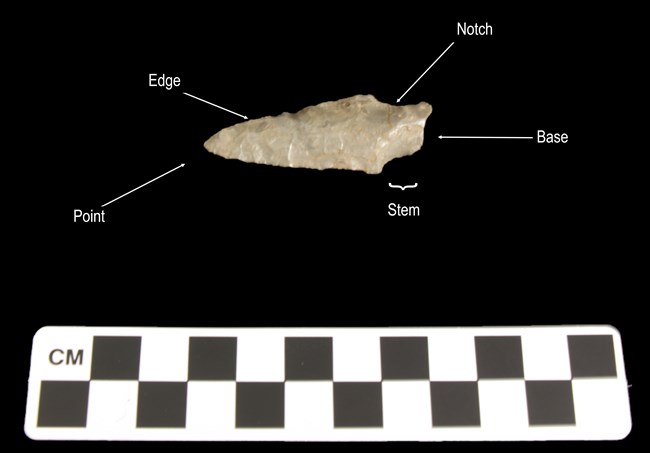Part of a series of articles titled Curious Collections of Fort Stanwix, The Oneida Carry Era.
Article
Archaic Brewerton Projectile Point

National Park Service
Fort Stanwix is known for its importance in the American Revolutionary War, but did you know the grounds of the fort have a history extending thousands of years beyond that? Fort Stanwix was built upon a hill that had been visited by American Indians long before the arrival of the Europeans. These prehistoric visitors left behind no written evidence, but only artifacts of their culture beneath the ground. When archaeologists excavated Fort Stanwix in the 1970’s, they discovered these sparse clues in addition to the historic fort. Compared to the half-million British and American artifacts which lie in the fort’s 18th through 20th century collections, the 444 prehistoric artifacts are easy to overlook. Though few in number, these objects illuminate nearly 5,000 years of life in pre-colonial New York.

National Park Service
Ancient Peoples on Ancient Trails
This Brewerton corner-notched projectile point was recovered during the 2003 archeological excavation that preceded the construction of the Willett Center. Dating to the Archaic period (9,000 – 3,000 BP), the point represents Native Americans’ use of the land around Fort Stanwix prior to contact with Europeans. The fort was built by the British in 1758 along a six-mile portage connecting the Mohawk River and Wood Creek. Known by the British as “the Oneida Carrying Place” or “the Great Carry,” the portage was used for centuries by the Seneca, Cayuga, Onondaga, Oneida, Mohawk, and Tuscarora before Europeans arrived in the area and recognized its importance as a trade route.
Brewerton Corner notched points are found in New York, Pennsylvania, Ohio, southern Michigan, and Indiana. They are characterized by wide shoulders (the wide area above the notch). This particular point has a triangular blade and shallow side notches. The base below the notches is short and curves slightly inward. This piece is made of very dark gray flint and comes from the Late Archaic Period. People of the Late Archaic were hunter-gatherers, and were among the first in the region to make metal artifacts from copper found near Lake Superior.

National Park Service
If These Stones Could Talk...
Archaeologists identify Archaic era sites by the presence of certain types of stone spear points that usually have notches on the bases. These notches were used to help tie or attach the stone points to a spear shaft that was probably made of wood. Sharp serrated edges on some spear points suggest that they were also used as knives, possibly for butchering game. Artifacts associated with the Late Archaic period include large stone knives, darts, and spear points with stemmed hafts, cooking slabs made of soapstone (a soft stone that retains heat well), fiber-tempered pottery vessels, and soapstone vessels.
Stone any tools, such as scrappers, choppers, and hammers remained relatively unchanged in morphology and utility for large periods of time. Therefore, they are categorized as temporally undiagnostic artifacts. However, inexplicably, stone projective points changed in size and morphology numerous times throughout history. This has made them a useful tool in identifying distinctive cultures as well as reconstructing a chronologic timeline of these early people and the places they inhabited. The use of fine-grained cryptocrystalline cherts and quartzite, chalcedonies to make projectile points nonetheless, remain relatively consistent over time. Wear patterns show that it was common practice to repoint and resharpen these tools. Broken points were rarely discarded, but instead reworked into other tools, such as scrapers and drills.
-
New York Heritage Digital Collections
-
Ohio History Connection, Acrcheological Collection
-
New Georgia Encyclopedia
-
Hanson, Lee M. Casemates and Cannonballs: Archaeological Investigations at Fort Stanwix, Rome, New York. Washington: National Park Service, 1975.
Last updated: July 28, 2025
